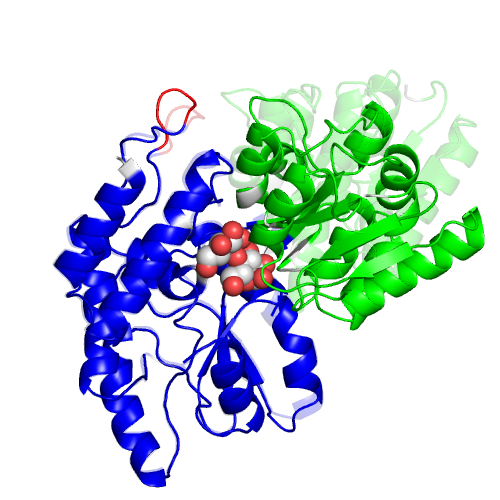CD.39 |
MALTOSE-BINDING PERIPLASMIC PROTEIN |
|
|
|
Ligand |
PDB*1 |
Full name |
MAL |
MALTOSE |
|
*1 Ligand name designated by the PDB identifiers. |
Segments |
Component No. |
Fixed*1 |
Moving*1 |
Motion type |
Ligand binding |
Coupled motion type |
1 |
D1(110A-110A,112A-154A,156A-206A,208A-260A,317A-340A,342A-369A) |
D2(3A-62A,64A-65A,67A-109A,261A-299A,301A-301A,303A-315A) |
Domain |
Coupled |
Closure |
|
*1 The location of the fixed and moving segments indicated by the residue number assigned in the ligand-bound form. The background color of characters indicates the corresponding segment in the structure. The colored segments not described in the Table are: 1) a part of component in which the motion is small (< 1.0 A), or, 2) a part of a protomer of homodimers, for which a corresponding part of the other protomer is shown in the Table. |
Displacement and disorder |
Component No. |
RMSD*1 |
Displacement*2 |
Disorder-order transition*3 |
Disorder residue*4 |
Helix-Coil*5 |
1 |
4.4 |
|
*1 The root-mean-square displacement of a component of motion calculated for the domain motions. |
Linear response |
Component No. |
Correlation coefficient*1 |
1 |
0.96 |
|
*1 The correlation coefficient between the displacement vector predicted by the linear response theory and the one observed in the crystal structures. |

